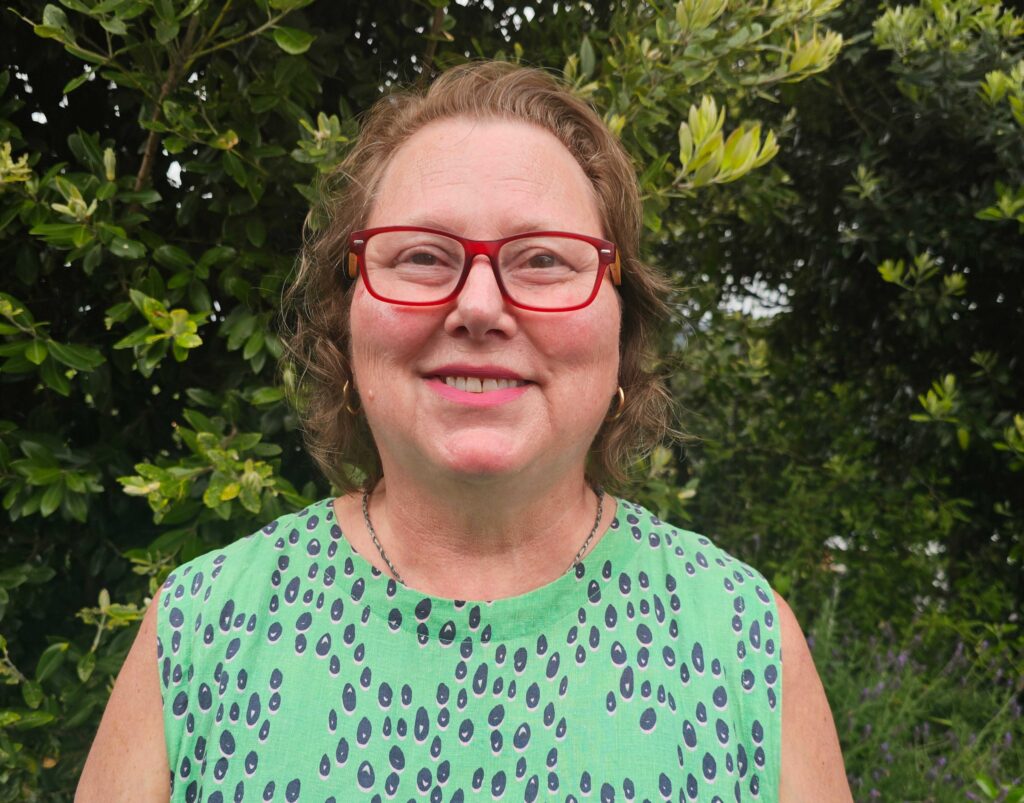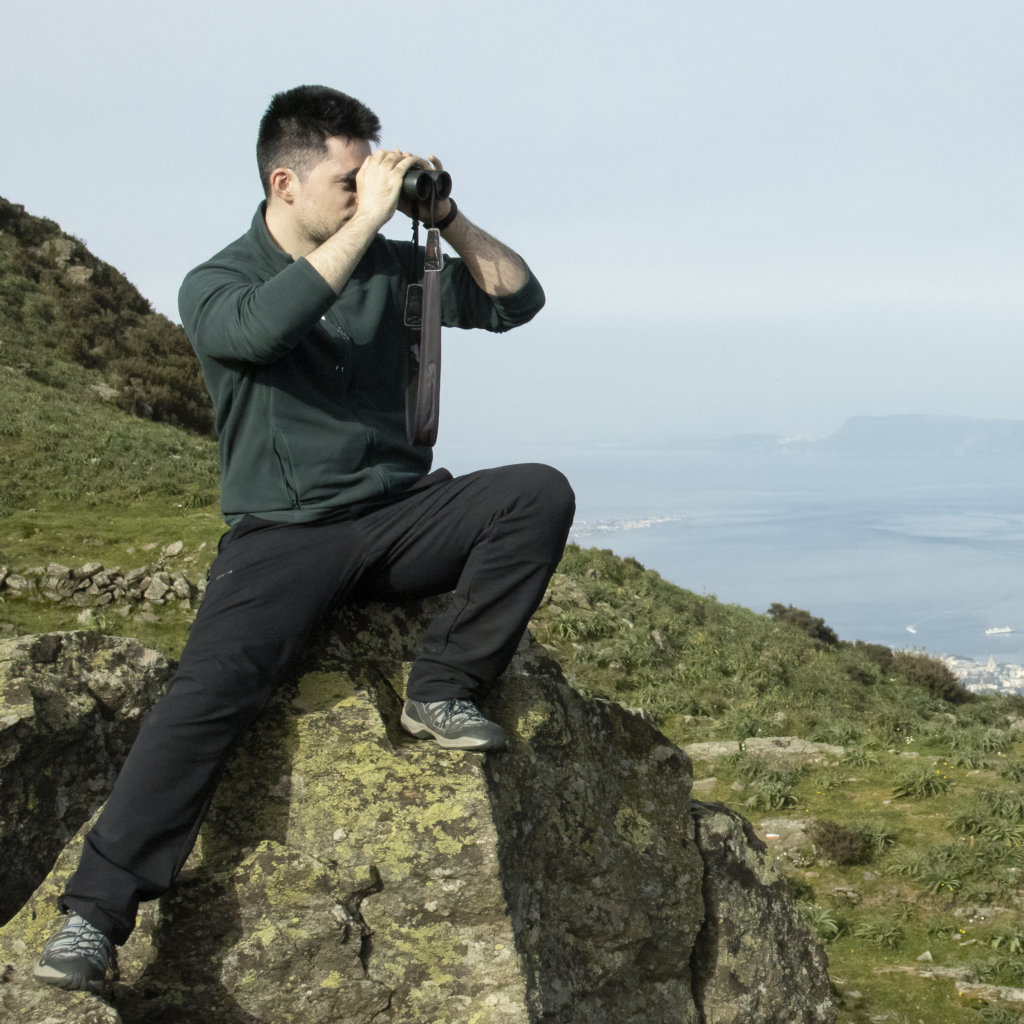Interview with a Myrmecologist in New Zealand
Monica Gruber is the co-founder and leader of the Pacific Biosecurity programme in New Zealand. She finished her PhD in ecology at Victoria University of Wellington under the supervision of Phil Lester, where she worked on the yellow crazy ants. Then she was a postdoctoral researcher at the School of Biological Sciences working in different biological fields with ants and other insects. Currently, in association with several institutions and researchers, her efforts are focused on the control of invasive species in the Pacific islands.

An Interview compiled by Lina Pedraza and Salvatore Brunetti


MNB: Could you tell us a bit about yourself?
MG: Kia ora koutou! (Greetings to you all / May you all be well! From the Māorí language) I am based in Aotearoa New Zealand, where I was born and grew up, although you can probably tell from my name that I have European ancestry. My parents came to New Zealand in the 1950s as part of an assisted programme to increase skills in the country. My father went from an apprenticeship restoring castles to building community housing here. I was the first in my family to complete secondary school and go to university. But I didn’t start studying seriously until I was 40. I got pretty hooked on research in the field of genetics and evolutionary biology. So, I went on to do a PhD with Phil Lester on yellow crazy ants, followed by several postdoctoral fellowships. Mostly over the last ten years, I have been running Pacific Biosecurity, which I founded with Phil as a not-for-profit initiative at Victoria University of Wellington. I’ve now worked with people in most countries in the Pacific islands’ region, including very remote places like Tokelau and Pitcairn. Climate change is a reality in the region, and I’ve seen many changes in the last ten years.
MNB: Could you tell us about your research?
MG: I have been fortunate to work on a wide range of different aspects of biological research, including ecology, conservation, population genetics, genomics and bioinformatics. My research focus was initially on how genetic and genomic diversity, population dynamics and ecological community interactions affect the success of invasive ants. I also investigated their impact on biodiversity and well-being, which underpins my current work. I was involved in preliminary research to develop biological control methods for wasps and ants, exploring bacteria, viruses and genomics. Now, my research is mainly applied and has included projects on the socioeconomic and environmental impacts of ants, management of yellow crazy ants and biosecurity in the developing Pacific islands’ region.
MNB: How did you end up studying ants?
MG: Unlike many people who study ants, I wasn’t fascinated by them when I was a child – mostly because I never saw them! The native ant fauna in New Zealand is depauperate, and when I was young, there weren’t any invasive ant species here. During my undergraduate ecology studies, I knew I wanted to do something to contribute to conservation. And it was really Phil Lester’s lectures on invasive species, and his offer of a lab position to investigate the genetics of yellow crazy ants in Arnhem Land that got me started on ants.
MNB: If you had not become a myrmecologist, what else would you have liked to become?
MG: My parents, like so many immigrant parents, wanted me to become a doctor. But I don’t think they meant an ant doctor. I previously had a 15-year career in information technology, but I wouldn’t want to go back to that. I really enjoy writing. So, if I were to choose a different career now, it would be to write.
MNB: What is your motivation for doing ant research now? What do you enjoy most about ant research?
MG: My motivation is to help people in developing countries in the Pacific region to prevent the arrival, establishment and spread of invasive species and mitigate the impacts of those already there. We know that species like the red imported fire ants cause huge problems. But in the Pacific, people spend much more time outside so they would be more badly affected. What I enjoy most is making a difference. When we significantly reduced the numbers of yellow crazy ants in Tokelau, hearing how people’s lives improved and seeing rapid recovery of native species was truly rewarding.

MNB: What was the biggest obstacle you had to overcome in ant research?
MG: Trying to get my head around ant reproductive systems, which are both fascinating and complex. It was difficult for me to settle on one thing, so I guess the biggest challenge was deciding what to focus on. It was my first visit to Tokelau that changed my direction completely and led to the work I do now.
MNB: Who or what inspired you to pursue a career in myrmecology?
MG: I have always been intrigued by island biogeography, and E.O. Wilson’s work on the taxon cycle first got me interested in ants as a model species. But it was Phil Lester who got me committed.
MNB: What would you do differently if you could start all over again?
MG: Be more relaxed. I always felt, especially as an older person and because of my own and outside expectations, that I had to do more and work harder.
MNB: During your research, what was the scariest moment?
MG: Presenting at IUSSI in Copenhagen in 2010. I was a year into my PhD, and it was like visiting the Mount Olympus of the ant world. But people were so kind, particularly Kazuki Tsuji, Heike Feldhaar and Andy Suarez.
MNB: Is there any particular situation in which you typically have the crucial idea for solving a difficult problem?
MG: There’s no specific situation. Sometimes, I’ll come up with ideas in the middle of the night. Generally, I come up with several scenarios over time and talk through those ideas with others.
MNB: What are the main differences regarding research when you started as a myrmecologist compared with today?
MG: The advent of genomics and bioinformatics and the promise of genomics’ practical application in invasive ant control.
MNB: What do you think will be hot topics in ant research in the next ten years?
MG: Tough question. I’d like it to be a way of managing invasive ants without environmental impacts. Hopefully, genomics will provide the answer, but I think we are still a long way off.
MNB: Do you have any suggestions for myrmecology newbies?
MG: Enjoy the variety and say yes to (almost) everything. Listen to your supervisor. They are almost always right.
MNB: The higher the career level, the fewer women, also in ant research – what do you think will be most important for achieving gender equality in this respect?
MG: I think this applies much more broadly, not just in ant research or any research, and not just to women. I’ve come to realise that most of the time, unconscious bias underpins many of the world’s equity issues. I’m pleased that compared to when I was young, it seems easier to call out discriminatory behaviour.
MNB: Does your group harbour students or postdocs with kids?
MG: I don’t really have a group. But I’ve often worked with new researchers who have children, and I was one. It is difficult balancing everything and very challenging when you must spend long periods away from family.

MNB: What question are you asked most often when people hear you work with ants?
MG: People used to ask “Why would you do that?” In New Zealand many people just see ants as a minor pest. They don’t see the enormous damage that can be done by species such as red imported fire ants or the fascinating variety of all the species found elsewhere. However, these days people are more likely to ask me how to get rid of them.
MNB: What is the one thing you wish everyone knew about ants?
MG: That spraying worker ants with pesticides won’t solve their ant problems and only contributes to environmental harm. And that trying to eradicate all ants is not a solution.
MNB: Do you have a favorite morphological structure / myrmecological phenomenon?
MG: It would have to be the amazing diversity in the way ants make new ants, their reproductive systems.
MNB: Do you have a favorite ant species?
MG: Yellow crazy ants. I admire that they have managed to get across so much of the Pacific, and we don’t even know where they came from or how they got there in the first place. And they are so persistent. An ideal colonizer.
MNB: In another life, if you could be an ant, what ant species would that be?
MG: Yellow crazy ants, again. It would be fitting payback since I’ve been responsible for the deaths of so many of them.
MNB: Which other scientists (or PostDocs, PhD students) would you like to be featured in a Myrmecological News interview?
MG: There are so many interesting people, it’s hard to give names without missing someone out. But I suggest researchers and practitioners who are based in developing countries.
MNB: What is the one thing you would want to change in science?
MG: Just one thing? That it could be done faster. That science was more inclusive and more accessible to non-scientists.
MNB: How can future generations bring a change?
MG: Effective science communication is important to be able to translate complex ideas into easily understood messages. COVID showed us some great examples of that, but also how messaging around science could be misused and misrepresented.
MNB: What is the book on your bedside table?
MG: On my Kindle app. Currently I’m partway through Kim Stanley Robinson’s Mars trilogy, and his Ministry for the Future is next. Although I think the future he envisions is already here.
MNB: Watching sports or doing sports?
MG: Neither. Unless walking on the beach and in the bush is a sport.
MNB: Listening to music or playing an instrument?
MG: Listening.
MNB: Do you enjoy the evening or the morning?
MG: Morning – especially 3 am when I’ve come up with a solution to something that has been bothering me for days.
MNB: Tea or coffee?
MG: Both. I love coffee, but it doesn’t agree with me now, so I have moved to peppermint tea.
MNB: Habit or change, what do you prefer?
MG: Change. But knowing if and when to seek change can be a challenge.
MNB: Cooking yourself or going out having dinner?
MG: Cooking. I like to experiment. Fortunately, my husband is not fussy.
MNB: Aspirator or forceps?
MG: Aspirator.
MNB: Nest densities or pitfall traps, what do you prefer?
MG: Pitfall traps.
MNB: Field work or lab?
MG: Field work.
MNB: Pin or ethanol?
MG: Ethanol.
MNB: Paper printed out or reading on the laptop?
MG: Laptop for work and mobile phone with Kindle app for recreational reading.
MNB: Journals financed by the author (open access) or by the reader (subscription based). What do you prefer?
MG: Both have their purpose. I like open access because you can potentially reach more people.
MNB: Kin selection or group selection?
MG: Kin selection.





Recent Comments